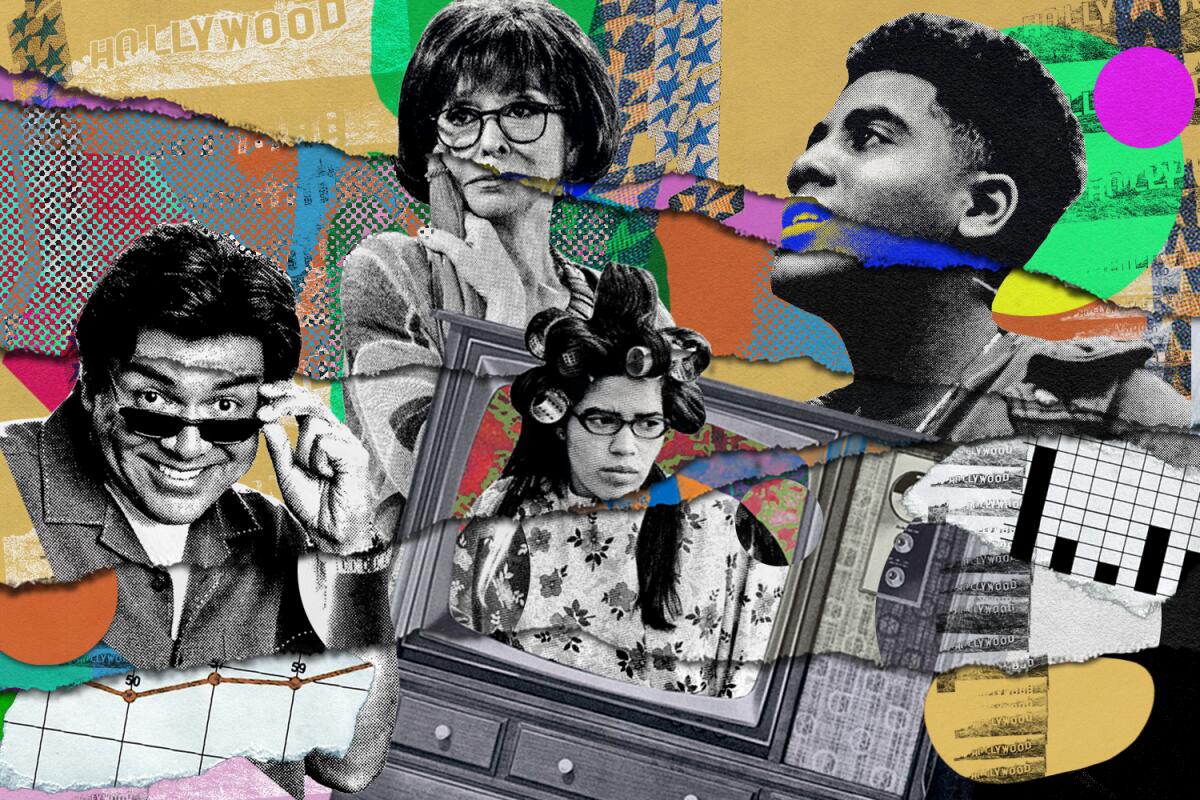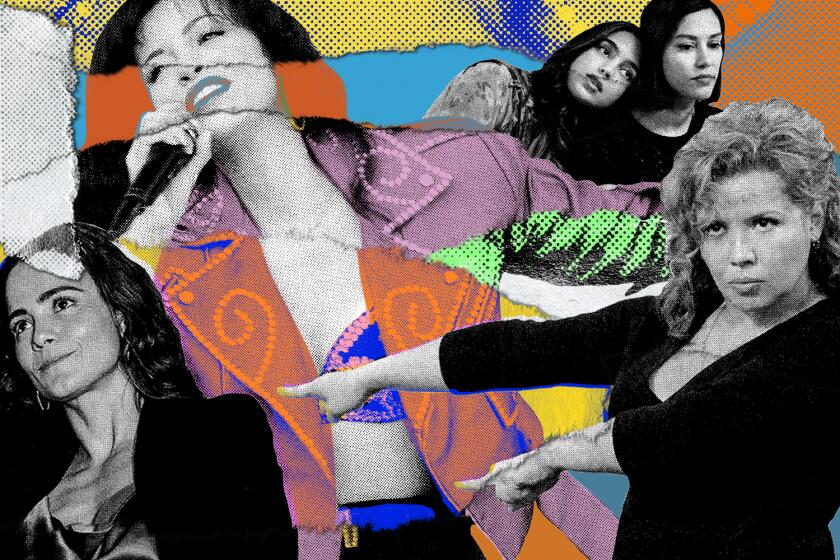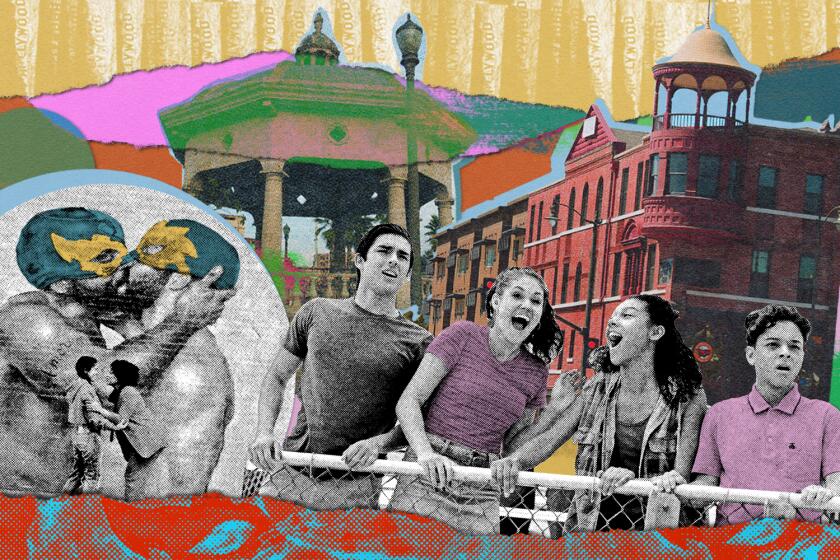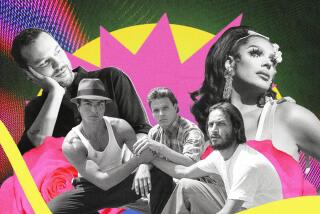Long underrepresented in film and TV, Latinos are falling further behind


SPECIAL REPORT
Hollywood's Latino Culture Gap
Times journalists examine the complicated history of Latinos in Hollywood and the actions being taken to increase their representation, which remains stubbornly low. FULL COVERAGE
With the highly anticipated film adaptation of Lin-Manuel Miranda’s “In the Heights,” a documentary about storied performer Rita Moreno, a new, high-octane installment of the “Fast & Furious” franchise and Steven Spielberg’s upcoming remake of “West Side Story,” 2021 is shaping up to be a milestone year for Latino representation in Hollywood.
But history shows that roles in summer blockbusters and awards contenders are no guarantee of sustained progress. Indeed, despite sustained attention to the issue of diversity in film and television, statistics on Latino representation have been sparse and inconsistent, and what data does exist paints a stark picture: For more than a decade, on-screen representation has hardly improved for Latinos, despite being one of the fastest-growing communities in the U.S.
In 1999 — when none of the broadcast networks’ 26 new fall series featured a non-white lead, sparking a boycott by advocacy groups such as the National Hispanic Media Coalition (NHMC) and the National Assn. for the Advancement of Colored People (NAACP) — the National Hispanic Foundation for the Arts told The Times that Latinos, who then represented 11% of the population, made up fewer than 2% of characters on television.
Today, Latinos are more than 18% of the population yet made up only 5.3% of the share of broadcast TV roles in the 2018-19 season, according to the 2020 UCLA “Hollywood Diversity Report.” Big-screen representation is similarly bleak: Latinos accounted for only 4.6% of movie roles in 2019, according to the same report.
To understand the state of Latino representation over time, The Times analyzed reports published by UCLA, USC, Columbia University, NHMC, the National Assn. of Latino Independent Producers (NALIP), the Directors Guild of America (DGA) and the Writers Guild of America (WGA) through 2019. (Our analysis excludes 2020 to account for incomplete data and the COVID-19 pandemic’s disruption of the entertainment industry.)
Guiding questions, data sources and methodologies varied from group to group, even year to year. And in earlier years, parts of annual studies such as USC’s “Inequality in 1,300 Films” and UCLA’s “Hollywood Diversity Report” combined data for all nonwhite groups into one category.
Darnell Hunt, co-author of the “Hollywood Diversity Report” and dean of social sciences and professor of sociology and African American studies at UCLA, explained that their research aims to “get a sense of how people of color collectively are doing relative to whites” before offering breakdowns by race/ethnicity.
“We’re starting with the industry that’s been dominated by whites. And so the question is, is that white dominance decreasing?” Hunt continued. “If we just showed you every year a breakdown of, like, nine different groups, it would be almost impossible to kind of keep track of whether things are really getting better or worse.”
Nor are the factors that make it challenging to compare studies a shortcoming, said Frances Negrón-Muntaner, a professor at the Center for the Study of Ethnicity and Race at Columbia University: “That people define the problems in different ways and use different categories and different frameworks is a positive thing for knowledge production. Homogenization is not.”
Here are the results of our analysis of Latino representation in on-screen roles and among writers, directors and executives in film and television.
Part of a growing cadre of Latino writers speaking out, staffers say the project came with a low budget, poor pay and a brutal schedule.
On-screen representation
On-screen representation is one of the most intuitive measures of Hollywood diversity — and both quantity and quality of representation is key.
Measuring representation by the number of speaking or named characters is necessarily imperfect. But it’s clear from USC’s “Inequality in 1,300 Films,” which examines the top 100 highest-grossing films each year in the U.S., that the number of movie roles for Latinos has been stalled for more than a decade.
USC researchers found that even at the 2017 peak, Latino actors held only 6.2% of roles — despite making up 18.1% of the U.S. population that same year, according to the U.S. Census Bureau. (The USC study groups those of Spanish and/or Latin descent together, while UCLA’s “Hollywood Diversity Report” does not.)
Television has followed similar trends. In its assessment of overall cast diversity of broadcast TV shows in the 2018-19 season, the UCLA “Hollywood Diversity Report” found that Latinos were just 5.3% of the total, a scant increase from 5% seven years ago. Since the 2011-12 season, the Latino share has never surpassed 6.4%.
Although UCLA also collects separate statistics for cable and digital (streaming) TV, The Times chose to visualize the data on broadcast TV because it offers the best sense of change over time. UCLA researchers estimate that, in English-language programs shown in the U.S. across the broadcast, cable and digital, Latino actors constituted about 6% of main cast members in the 2018-19 season. During the period examined by The Times, Latinos have been consistently underrepresented in broadcast, cable and digital television alike.
Notably, the most recent data we examined were shaped by two methodological changes implemented for UCLA’s 2020 study: the restriction of the digital TV sample to English-language programs only, to account for the explosion in original streaming programming made overseas; and the reclassification of Black Latino actors from multiracial to Latino. (Of actors in the 2018-19 broadcast season study, only four were Black Latino. The number of Black Latino film actors that year was seven.)
Why haven’t Latino representation numbers changed much?
“Hollywood Diversity Report” co-author and director of research and civic engagement of the division of social sciences at UCLA Ana-Christina Ramón argues that executives in power view Latinos, as well as Asian Americans, as foreigners. “Unfortunately, the effect of that is that they think that the community is a very niche community and that they prefer Spanish-language, and so really the push for representation in English-language programming hasn’t been there because there’s this misunderstanding of who the community is and what the audience wants to see.”
Charles Ramírez Berg, a professor at the University of Texas at Austin and author of “Latino Images in Film: Stereotypes, Subversion, and Resistance,” further observes that many nonwhite actors are cast for roles that overemphasize their race or ethnicity. Instead, he says, “just let them be people.”
ABC, CBS, NBC and Fox have pledged to improve diversity in the wake of the Black Lives Matter movement. It’s the latest chapter in a decades-long struggle.
Writers
On-screen representation begins with the script, and that means any measure of diversity and inclusion in Hollywood must account for writers.
Membership data from the Writers Guild of America provide some of the most comprehensive statistics about diversity in the writer’s room. Thousands of writers are represented each year in the data, though statistics from 2015 to 2018 are unavailable, according to a WGA spokesperson.
Latino representation among film writers is even worse than Latino representation on screen: Since 2008, Latinos have never constituted more than 5% of employed WGA film writers, according to the available data.
In television, Latino representation hovered below 5% before increasing in recent years. In 2019, Latino writers constituted 8.7% of employed television writers as measured by the WGA, up from 2.5% in 2008.
Representation in the writers’ room matters. “You could say, ‘Well, it’s simple, let’s just multiply the Tanya Sarachos and Gloria [Kellett] Calderóns,’” said NALIP executive director Benjamin Lopez, referring to the success of the “Vida” and “One Day at a Time” showrunners. “It’s not as simple because most of the next generation in line haven’t been able to access a writers’ room in the first place.”
One note about to the WGA data: Not every guild member counted in the guild’s 2016 “Hollywood Writers Report,” which covers the years 2008 to 2014, elected to disclose ethnicity; for example, about 16% of ethnicity information was missing in 2014. Existing research, coupled with prevailing trends among members who declined to disclose their ethnicity, led researchers to code these entries as white for the purposes of analysis.
Hollywood has often limited Latino stories to Boyle Heights and East L.A. Now, two Netflix series are imagining how to broaden pop culture’s horizons.
Directors
Responsible for the look and feel of a feature film or TV episode, directors have a say in everything from casting to color palette.
USC found that Latinos made up 1.8% of directors on 2019’s 100 top-grossing movies, or two people in all. Across the span of 2007 to 2019 covered in USC’s report, Latinos accounted for 3.6% of directors.
The dearth of Latino film directors has consequences: Another recent study by USC found that “when a Latino director was attached to a film, the percentage of Latino characters on screen increased from 4% to 13%.”
In television, data compiled by the Directors Guild of America tells a different story.
Since the 2016-17 season, when the 18,000-plus member guild began reporting the findings of its annual “Episodic TV Director Inclusion Report” by race/ethnicity, the proportion of TV episodes directed by Latinos has increased steadily: Latinos directed 4% of episodes in the 2016-17 season; in the 2019-20 season, they directed 7%. Even with these recent gains, Latinos remain dramatically underrepresented among TV directors.
It should be noted that the DGA report is limited to data from its membership.
Executives
When it comes to the highest positions at film studios and TV networks, executive-level positions remain overwhelmingly white and male, a UCLA analysis found.
These executives make high-level decisions that shape which movies and TV shows their companies produce and distribute.
Researchers at UCLA examined executives at the unit head level and above at 74 TV networks, TV studios and streaming platforms, and 11 major and mid-major film studios in 2020.
On the TV side, they found just 20 Latino executives out of 919, or 2.1%, none at the CEO/chair level. Of the 170 film executives studied, zero were Latino.
A review of senior leadership at the six major media companies shows that the top ranks remain overwhelmingly white.
“It all starts at the top,” Hunt said. “The culture of these organizations are set by the people who reside in the executive suites, who make decisions about what gets greenlighted, the size of the budget, who gets to direct ... who is the showrunner for a particular show. All of those things are largely a function of the makeup of the room.”
And diverse executive suites are the key to sustainable progress, Ramón said.
“If you just put one person of color in a top position, that’s still not going to be enough because you need to support them with more people of color,” Ramón said. “It’s not just enough to name one person of color as the head of something. You’re still gonna need to create a whole culture and something from top to bottom at the studios that shows that there’s inclusive efforts and that you’re hiring and you’re promoting people of color.”
What’s next?
Since the NALIP collaborated with Columbia University, the National Hispanic Foundation for the Arts (NHFA) and the National Latino Arts, Education and Media Institute (NLAEMI) on Negrón-Muntaner’s seminal 2014 study “The Latino Media Gap: The State of Latinos in U.S. Media,” Lopez says he’s seen a continued push to track such data, including from TV networks and film studios that have incorporated roles or departments focused on diversity, equity and inclusion.
And by accurately quantifying Hollywood’s failures of representation, as well as holding people, processes and institutions accountable, the last 10 years of analysis has been instrumental in the sustained interest to the subject.
Lopez cautions against relying solely on data for a holistic picture of the state of representation, though.
“You could say Ryan Murphy is always gonna team up with the Steven Canals of the world to do something like ‘Pose,’ which is great,” he said. “What are the chances that Steven Canals is going to score his own mega-deal, even within the same platform? That to me is a better measure of success than to just say there’s a demographic achievement across that data point.
“I think it’s better to actually go more granular and measure the impact of that deal — how big, how meaningful it is,” he continued. “We need to come up with a better system of measurement.”
A collaborative approach to data collection might be useful to researchers.
“The ideal scenario would be that ... these are public datasets and we keep feeding it,” said Negrón-Muntaner. “So it becomes available for people to do more work and also for activists and industry and guilds and all the various actors in this landscape to be able to access information.”
Longitudinal studies such as Negrón-Muntaner’s remain rare, she said, because they’re time consuming and difficult to produce without funding. But it’s the historical view that has allowed researchers to identify what she calls a “zigzag pattern” in Latino representation, increasing or decreasing incrementally year by year while falling further behind the Latino population’s exponential growth — a pattern that continues, according to The Times’ analysis.
It’s also a pattern that’s bad for business: “Increasingly diverse audiences demand diverse content,” said Ramón, pointing to people of color as a driving force at the box office who’ve buoyed the success of films like the “Fast & Furious” franchise.
Which may make “In the Heights” — a high-profile project in its own right, timed to the wider reopening of U.S. cinemas — what Ramón calls “a game-changer for Latinx films, at least in Hollywood.” “It is a film that’s best for this moment,” she said. “It is kind of a joyful film that really has a very personal story attached to it that resonates with different communities as well and not just with our Latino community. So, I’m really interested to see how people react to it, but I think it’ll be positive.”
More to Read
The complete guide to home viewing
Get Screen Gab for everything about the TV shows and streaming movies everyone’s talking about.
You may occasionally receive promotional content from the Los Angeles Times.












